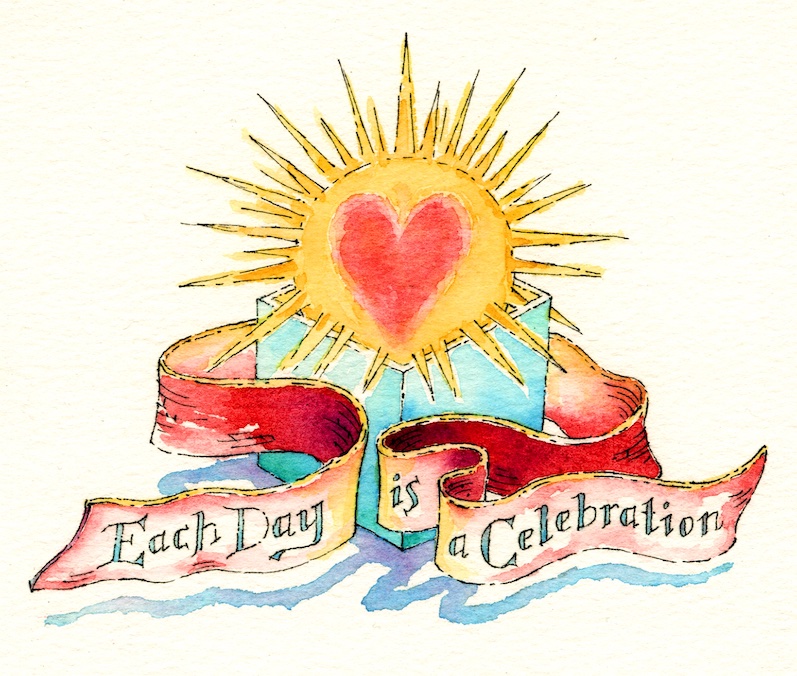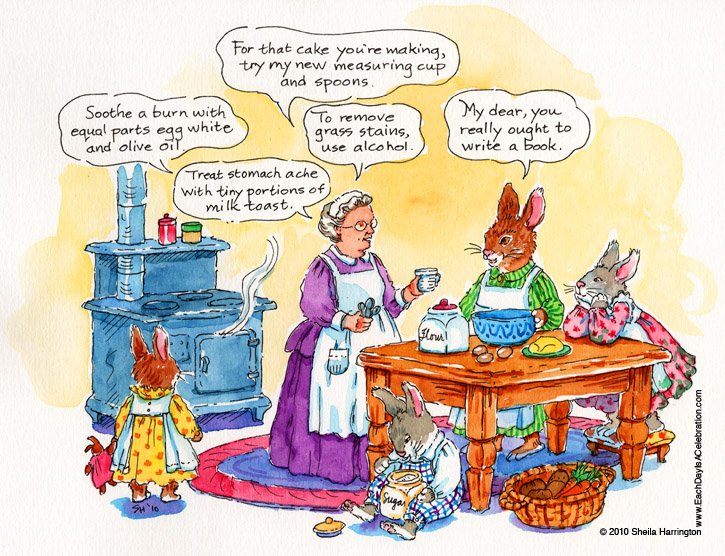If you were an American housewife setting out to bake a cake or a loaf of bread in the 19th century—or the 18th—or the 17th—you generally relied upon what you had learned at your mother’s side. You assembled flour and milk and sugar and milk and shortening and eggs, estimating amounts as best you could and combining them from memory in the proper order. In 1303 Edward I of England had standardized the pound, and the American colonists brought with them, and still use today, the old English standards of measurement (the British have revised their system several times since then, so we no longer match), and most farm wives could measure in pounds, pecks, and bushels. But as for smaller units you were on your own with vague descriptions (“a dab of cream” “a piece of butter as large as an egg”) or whatever teacups you were fortunate enough to possess.
That is, until Fannie Farmer (1857-1915), who was born on this day in Medford, Massachusetts. Her father was an editor and printer, and her parents believed in higher education for girls, but Fannie suffered a stroke at age 16 (!), which prevented her attending college. What she could do, however, was take up responsibility for the household’s cooking. Evidently she had a natural talent. When the family home became a boarding house, it gained a reputation for its fine meals.
So Farmer was encouraged by a friend to obtain teacher training at the Boston Cooking School, which took a scientific approach to food preparation, and she did so well that she stayed on to become Assistant Principal and then Principal in 1891. And in 1896, Farmer published The Boston Cooking-School Cookbook.
Now, cookbooks were not unknown to American housewives. Amelia Simmons’ American Cookery had been self-published in 1796, with colonial favorites like pumpkin pudding, watermelon pickles, and spruce beer (Mmmm!), and by the late 19th century there was an explosion of cookbooks by women, offering medical mixtures (“A wash to prevent the hair from falling off”) and household advice (“Words of Comfort for a Discouraged Housekeeper”—now there’s one we could use) as well as recipes.
Farmer’s cookbook was even more comprehensive, including sections on the chemistry of cooking and cooking techniques, the specific components of food and why each was necessary for health, how a stove works, how flour is milled, what happens during fermentation, and extensive detailed advice on caring for the sick. In addition to these she offered recipes with straightforward, precise directions and—Ta-Daaa!—Actual Measurements, the tools for which (the standard measuring cup, divided into ounces, and graduated measuring spoons) she had created earlier. The publisher, Little, Brown, had “little” faith in the book’s success, and insisted Farmer foot the printing bill herself. When the book became hugely popular (it has sold millions of copies and has never been out of print), this turned out very well for her because she had retained copyright. Ha! Unlike poor Irma Rombauer who unfortunately sold her rights for $3,000 to Joy of Cooking’s publisher.
Farmer’s success enabled her to open her own cooking school. She wrote other books, one of them focusing on cooking for the invalid; was invited to lecture at Harvard Medical School (which lectures were widely printed and read); wrote a regular cooking column in the Woman’s Home Companion; and continued to test and invent recipes and to lecture until the last few days of her life.
You can find Fannie Farmer’s cookbook today—in its 13th edition—at your local library and bookstore. And to celebrate the birthday of the “Mother of Level Measurements,” as she was called, you can make Fannie Farmer’s “Birthday Cake.” If you own a measuring cup and spoons, that is. I have the recipe right here, and if you email me, I will send it to you. (It may be straightforward by 19th century standards but it’s waaay too long to include here.)

